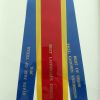Adaptive Plant Feature: Red Yucca
August 2, 2018 | By webadmin
If you are a regular to our blog, you know we always look for ways to blend native and adapted plants into our landscapes. Our extreme Texas weather and unpredictable rainfall requires us to choose plants that are well-adapted to our climate. Red yucca (Hesperaloe parviflora) is one of our go-to Texas tough perennials.
Red yucca is typically available with flower colors of red, coral, pink, to pale yellow. If you’re looking for a more intense red flower color, you’ll want to check out a newer variety of red yucca called Brakelights: this variety sports intense red flowers that are quite the showstopper.
__full-width__full-width.jpg)
Get to know yucca
While some yuccas are large and can look somewhat unkempt, red yucca is a clumping, tidy perennial that reaches three-four feet, both tall and wide. It has finer foliage that true yuccas which gives the plant a somewhat grass-like appearance. A native to southern Texas and northern Mexico, the plant can survive down to -20F, and excels during heat, sun, and periods of drought.
Hesperaloe grows best in well-drained soil and does not tolerate wet soil. Besides supplemental watering the first year during establishment, it is pretty self-sufficient. Make sure to plant in a full sun location for best performance.
Striking red tubular blooms that appear in the early summer and extend to fall are held on strong flower stalks. Flower stalks are held above the plant, reaching 5’ in height. The blooms are wonderful at attracting hummingbirds.
__full-width.jpg)
Care
Once the plant is established, little care or maintenance is required. Some people choose to deadhead spent flowers stalks to keep a neater appearance. Older leaves may also be removed once they become dried and unsightly.
Its companions
Red yuccas looks great planted in mass, but also work well with used as an accent plant or even in low-maintenance containers. Companion plants must have the same water requirements, therefore grasses like Panicum are ideal. Also use red yucca in the landscape with other waterwise choices like: agave, sedum, coneflower, cacti, or even wildflowers like calylophus.
Even though Brakelights is one of our favorite varieties, it isn’t the only hesperaloe on the market. There are several other colors that range from yellow, to coral-pink, to light red. You could combine colors to create a beautiful effect in your landscape.
Using adapted plants is very important in our region. Red yucca is the perfect example of a waterwise plant that doesn’t sacrifice on color and interest. Contact us today to get started on your waterwise landscape!
